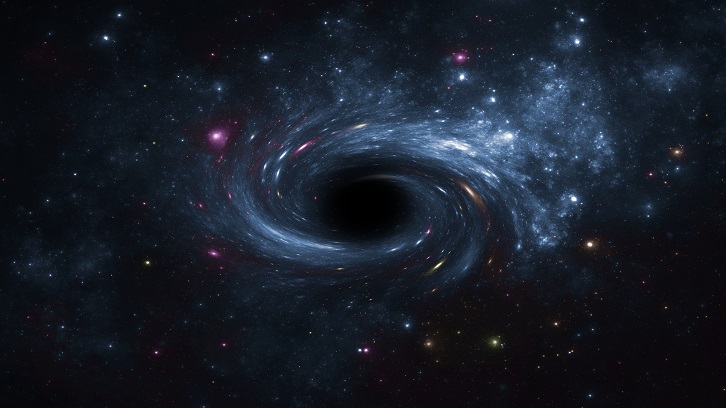Search of gravitational waves from primordial black hole formation

The constituents of dark matter remain unknown, but primordial black holes and their evaporation products are interesting candidates. IFAE and King’s College London researchers have searched signatures of these black holes in gravitational wave detector data. No such signatures were found but it is hoped that the next generation gravitational wave detectors will be able to test this scenario.
Despite huge experimental efforts we don’t know what constitutes the dark matter in the Universe. An interesting candidate for dark matter is provided by black holes formed in the early Universe from large quantum fluctuations. The possibility for the existence of these primordial black holes was suggested by Stephen Hawking in 1970, and in 1974 he showed that black holes lose mass by emitting particles. The Hawking evaporation process implies that very light primordial black holes would have disappeared by today. Yet, the evaporation of such light primordial black holes soon after their formation in the early Universe can have generated dark matter or the evaporation may have stopped around the Planck scale leaving stable relics that could constitute the dark matter.
The abundance of primordial black holes is constrained by various astrophysical observations. Across a broad range of primordial black hole masses, the possibility that they constitute all dark matter is excluded by searches of events where the target star looks brighter than usual as a black hole passes between us and the star magnifying its brightness through gravitational lensing. Another constraint arises from Hawking evaporation: The abundance of primordial black holes lighter than asteroids is constrained by searches of electromagnetic signals that we would expect to see from their evaporation.
The abundance of asteroid mass primordial black holes still remains unconstrained. Moreover, there are no constraints on the existence of very light primordial black holes that evaporated right after their formation. Testing the scenario where dark matter consists of asteroid mass primordial black holes or evaporation products of very light primordial black holes is challenging. The most promising way is through the cosmological signatures related to the formation of primordial black holes.
The formation of primordial black holes is accompanied by a gravitational wave background that has a particular spectrum. While the gravitational wave signals seen thus far by the LIGO-Virgo detectors are short duration transient signals from mergers of black holes or neutron stars, these experiments can also probe the gravitational wave background.
Researcher Ville Vaskonen together with his colleagues at the Institut de Física d'Altes Energies and King’s College London recently performed a search of gravitational wave signatures of primordial black hole formation in the LIGO-Virgo data. The search showed no evidence for such signatures and resulted in new constraints on the amplitude of quantum fluctuations in the early Universe. In addition, the analysis showed that in near future the LIGO-Virgo detectors and the next generation gravitational wave detector called Einstein Telescope will be able to probe the formation of light primordial black holes, thus testing the scenario where they, or their evaporation products, constitute the dark matter in the Universe.
Institut de Física d'Altes Energies
Universitat Autònoma de Barcelona
References
A. Romero-Rodriguez, M. Martinez, O. Pujolas, M. Sakellariadou, and V. Vaskonen, “Search for a Scalar Induced Stochastic Gravitational Wave Background in the Third LIGO-Virgo Observing Run”, Physical Review Letters, vol. 128, p. 051301 (2022). doi.org/10.1103/PhysRevLett.128.051301


